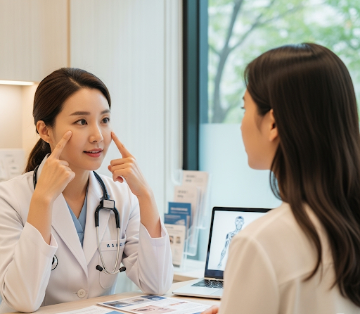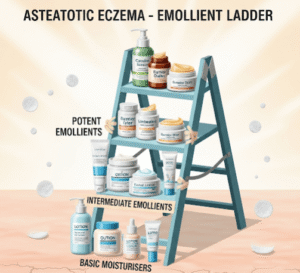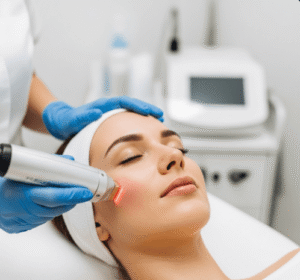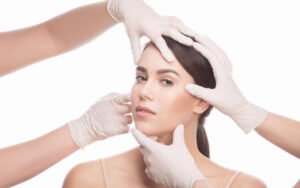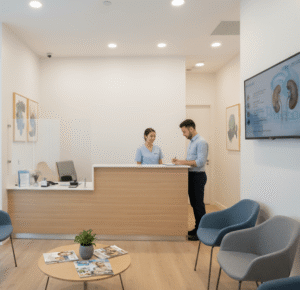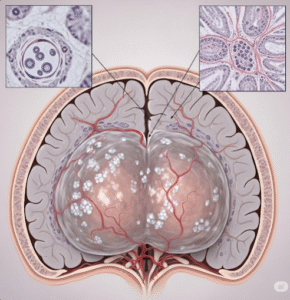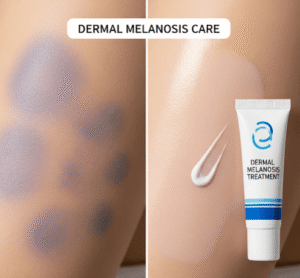Overview
Under-eye circles, also known as dark circles or periorbital hyperpigmentation, are areas of discoloration beneath the eyes that can make individuals appear tired, aged, or stressed. This condition is common across all age groups and can arise due to genetics, lifestyle factors, medical conditions, or natural aging.
➤ Under-eye circles may be temporary or persistent, depending on their cause.
➤ While usually benign, persistent dark circles can indicate underlying health issues.
➤ In Korea, dermatology and cosmetic clinics provide diagnostic evaluations and tailored treatment options, including skincare, non-invasive procedures, and advanced aesthetic treatments.
Key Facts
► Definition: Darkened skin beneath the eyes due to pigmentation, vascular congestion, or skin thinning.
► Prevalence: Very common; can affect both men and women, often becoming more prominent with age.
► Associated symptoms: Swelling, puffiness, dryness, and fine lines around the eyes.
► Risk factors: Genetics, aging, sleep deprivation, allergies, dehydration, sun exposure.
► Treatment in Korea: Topical creams, laser therapy, fillers, chemical peels, and lifestyle interventions.
What Are Under-Eye Circles?
Under-eye circles are caused by increased pigmentation, visible blood vessels, or structural changes in the periorbital area.
➔ Causes can be multifactorial, including genetics, skin thinning, vascular congestion, and lifestyle habits.
➔ They may be pigmented (brown), vascular (blue/purple), structural (shadowing from hollows), or a combination.
➔ Identifying the type of under-eye circles is essential for effective treatment.
What Symptoms Are Related to Under-Eye Circles?
Apart from visible discoloration, symptoms may include:
→ Puffiness or swelling under the eyes.
→ Itchy or watery eyes in cases related to allergies.
→ Fine lines or wrinkles in aging skin.
→ Dry or thinning skin accentuating discoloration.
→ Tired or fatigued appearance even after adequate sleep.
→ Occasional mild discomfort if associated with dermatitis or eczema.
Causes / Possible Causes of Under-Eye Circles
Genetic and Ethnic Factors
➤ Family history can predispose individuals to hyperpigmentation or thinner skin under the eyes.
➤ Certain ethnicities may naturally have darker pigmentation in the periorbital area.
Aging and Skin Changes
➔ Loss of collagen and fat under the eyes causes hollowing and shadowing, making vessels more visible.
➔ Thinning skin accentuates underlying blood vessels, producing blue or purple discoloration.
Lifestyle Factors
→ Sleep deprivation reduces skin health and leads to paleness, highlighting dark circles.
→ Dehydration diminishes skin elasticity and prominence.
→ Poor diet, alcohol, and smoking can exacerbate discoloration.
Medical and Health-Related Causes
► Allergies or atopic dermatitis can cause rubbing, inflammation, and pigmentation.
► Iron deficiency or anemia may worsen under-eye darkness.
► Fluid retention can result in puffiness, especially in mornings.
► Chronic stress or fatigue can intensify the appearance of dark circles.
Environmental Factors
➤ Sun exposure can increase melanin production and worsen pigmentation.
➤ Air pollution and smoking accelerate skin aging and vascular changes.
When Should I See My Doctor?
Medical consultation is recommended if:
➤ Under-eye circles suddenly appear or worsen rapidly.
➤ They are associated with swelling, pain, or changes in vision.
➤ You notice allergic reactions, persistent inflammation, or skin lesions.
➤ Lifestyle modifications and topical remedies do not improve appearance over time.
A dermatologist can identify underlying causes and recommend treatments tailored to your skin type and condition.
Care and Treatment
Lifestyle and Home Measures
► Ensure adequate sleep and hydration.
► Apply cold compresses to reduce puffiness.
► Reduce allergen exposure if allergies are a trigger.
► Maintain a balanced diet rich in iron, vitamins C and K, and antioxidants.
► Use sunscreen and eye creams to protect and nourish delicate skin.
Topical and Non-Invasive Treatments
➔ Eye creams with ingredients like retinol, vitamin C, hyaluronic acid, and peptides to improve pigmentation and elasticity.
➔ Chemical peels for mild pigmentation correction.
➔ Laser therapy to target vascular or pigmented under-eye circles.
➔ Microneedling to stimulate collagen and reduce hollowness.
Injectables and Advanced Cosmetic Procedures
→ Dermal fillers to address tear trough hollows and shadows.
→ Platelet-rich plasma (PRP) therapy to rejuvenate skin.
→ Combination treatments integrating laser, fillers, and topical therapy for optimal results.
Treatment Options in Korea
South Korea is renowned for advanced dermatology and cosmetic procedures for under-eye circles:
Diagnosis in Korea
➤ Clinical evaluation of skin type, pigmentation, and vascular involvement.
➤ Imaging techniques (such as high-resolution skin imaging) to assess structural causes.
Non-Surgical Care
► Prescription or medical-grade topical creams.
► Chemical peels or microdermabrasion for pigment reduction.
► Lifestyle guidance and allergy management.
Advanced Cosmetic Treatments
➔ Laser therapy for pigmentation or vascular issues.
➔ Dermal fillers to correct volume loss and shadows.
➔ PRP or combined treatment protocols for rejuvenation and long-lasting results.
Rehabilitation and Lifestyle Support
→ Education on sun protection, skincare, and nutrition.
→ Follow-up visits for treatment monitoring and maintenance.
→ Holistic approach integrating dermatology and cosmetic care for optimal outcomes.
Korean dermatology clinics combine state-of-the-art technology, expert specialists, and personalized treatment plans, ensuring effective management of under-eye circles.

